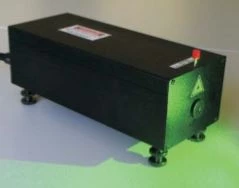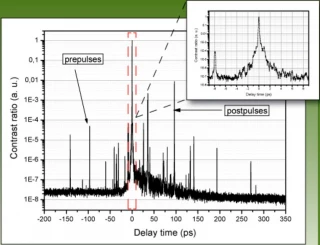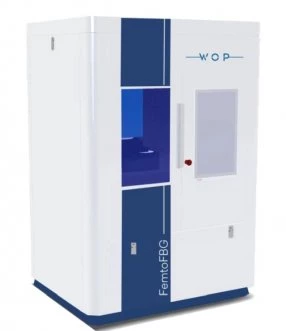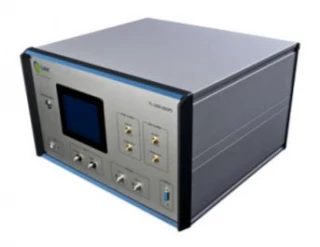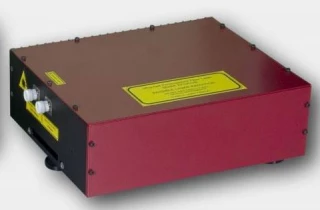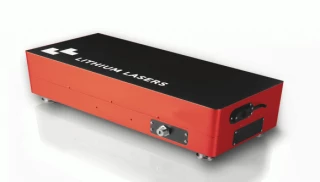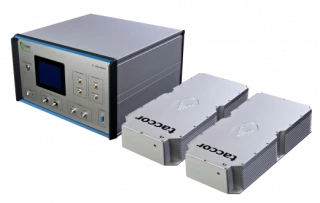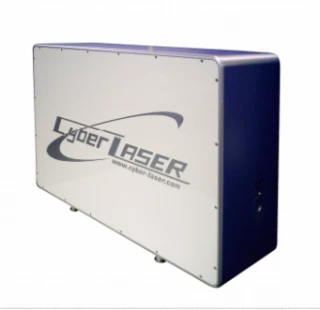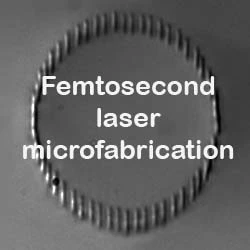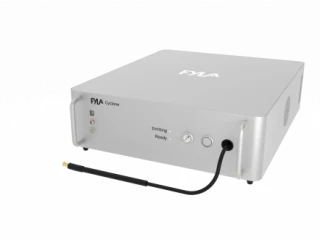1-25 of 247 results for "Femtosecond lasers".
Search Results
FEMTOLAS-200 DIODE-PUMPED FEMTOSECOND LASER
-
Sold by:
-
Ships from:
Germany
Specifications |
|
|---|---|
| Mode Locked Power (avg.): | 200 mW |
| Pulse Duration: | 200 fs |
| Bandwidth (FWHM): | N/A nm |
| Repetition Rate: | 100-100 MHz |
FEMTOLAS-1000 DIODE-PUMPED FEMTOSECOND LASER
-
Sold by:
-
Ships from:
Germany
Specifications |
|
|---|---|
| Mode Locked Power (avg.): | 1000 mW |
| Pulse Duration: | 200 fs |
| Bandwidth (FWHM): | N/A nm |
| Repetition Rate: | 100-100 MHz |
Rincon SS Single Shot Third-Order Cross-Correlator
-
Sold by:
-
Ships from:
United States
Specifications |
|
|---|---|
| Device Type: | Autocorrelator |
| Measurable Pulse Width: | 20-1000 fs |
| Wavelength Range: | 700-1500 nm |
| Input Polarization: | Horizontal |
SHBC - Second Harmonic Bandwidth Compressor
-
Sold by:
-
Ships from:
United States
Specifications |
|
|---|---|
| Output Wavelength: | nm |
| Conversion Ratio: | % |
| Output Pulse Bandwidth: | cm^-1 |
| Pulse Duration: | 2-4 ps |
FemtoFBG Laser Workstation for Fiber Bragg Gratings Writing
-
Sold by:
-
Ships from:
United States
Specifications |
|
|---|---|
| Materials: | Metals, Thermoset Plastics, Thermoplastics, Polimers, Textile, Wood, Paper, Stones, Ceramics, Glass |
| Laser Type: | Ultrafast |
| Laser Wavelength: | Other / Non-Specified |
| Laser Output Power: | -- W |
Carmel X-780/1550 Fiber-Based Femtosecond Lasers
-
Sold by:
Calmar Laser
-
Ships from:
United States
Specifications |
|
|---|---|
| Wavelength: | 780/1550 nm |
| Repetition Rate: | 80 MHz |
| Output Power: | 1-3 W |
| Pulse Duration: | <90 fs |
TL1000 Repetition Rate Stabilizer
-
Sold by:
-
Ships from:
United States
Specifications |
|
|---|---|
| Rep Rate Range: | 75 MHz - 10 GHz |
| Timing Jitter (taccor/helixx Models): | <100 fs |
| Timing Jitter (venteon/gecco Models): | <300 fs |
Femtosecond fiber laser Model Pearl-70P300
-
Sold by:
-
Ships from:
United States
Specifications |
|
|---|---|
| Mode Locked Power (avg.): | 70 mW |
| Pulse Duration: | 300 fs |
| Bandwidth (FWHM): | 8 nm |
| Repetition Rate: | 60-60 MHz |
LithiumSix912 - TRIPLE WAVELENGTH HP femtosecond laser
-
Sold by:
-
Ships from:
Italy
Specifications |
|
|---|---|
| Mode Locked Power (avg.): | 1500 mW |
| Pulse Duration: | 160 fs |
| Bandwidth (FWHM): | 40 nm |
| Repetition Rate: | 80-80 MHz |
TL-1000 ASOPS Repetition Rate Stabilizer
-
Sold by:
-
Ships from:
United States
Specifications |
|
|---|---|
| Rep Rate Range: | 79.68 MHz - 1.004 GHz |
| Timing Jitter: | <60 fs |
| Time Resolution In ASOPS: | <60 fs |
COMPACT FEMTOSECOND Yb:KYW LASER FX100
-
Sold by:
-
Ships from:
Belarus
Specifications |
|
|---|---|
| Mode Locked Power (avg.): | 1000 mW |
| Pulse Duration: | 200 fs |
| Bandwidth (FWHM): | N/A nm |
| Repetition Rate: | 70-70 MHz |
COMPACT FEMTOSECOND Yb:KYW LASER FX200
-
Sold by:
-
Ships from:
Belarus
Specifications |
|
|---|---|
| Mode Locked Power (avg.): | 8000 mW |
| Pulse Duration: | 200 fs |
| Bandwidth (FWHM): | N/A nm |
| Repetition Rate: | 70-70 MHz |
High Power Industrial Femtosecond Laser IFRIT
-
Sold by:
-
Ships from:
Japan
Specifications |
|
|---|---|
| Center Wavelength: | 780 nm |
| Repetition Rate: | 1-1 kHz |
| Pulse Energy: | 1 mJ |
| Energy Stability (RMS): | 0.9 % |
Ti^3+:Sapphire crystal laser rods/slabs/wafers
-
Sold by:
-
Ships from:
China
Specifications |
|
|---|---|
| Type Of Crystal: | Ti:Sapphire |
| Crystal Diameter: | 1-157 mm |
| Crystal Length: | 1-27 mm |
| AR Coating: | Uncoated |
Oria IR OPO - Automated Infrared Wavelength Extension for Femtosecond Ti:sapphire Lasers
-
Sold by:
-
Ships from:
Spain
Specifications |
|
|---|---|
| Repetition Rate: | 80 MHz |
| Total Tuning Range: | 1000-4000 nm |
| Core Tuning Range: | 1000-4000 nm |
| Output Power (avg): | 1 W |
Aktiwave Focuses On Advanced Concepts and Products In Optics Lasers and Microfabrication
-
Sold by:
-
Ships from:
United States
Specifications |
|---|
Cyclone - FYLA fiber laser
-
Sold by:
-
Ships from:
Spain
Specifications |
|
|---|---|
| Wavelength: | 900-1200 nm |
| Repetition Rate: | 80 MHz |
| Output Power: | > 0.25 W |
| Pulse Duration: | 15 fs |
gecco Femtosecond Laser
-
Sold by:
-
Ships from:
United States
Specifications |
|
|---|---|
| Mode Locked Power (avg.): | 600 mW |
| Pulse Duration: | 20 fs |
| Bandwidth (FWHM): | 40 nm |
| Repetition Rate: | 70-110 MHz |
Sigma Femtosecond Laser Stent And Tube Cutting System
-
Sold by:
-
Ships from:
United States
Specifications |
|
|---|---|
| Format: | Tower |
| Laser Source: | Fiber |
| Laser Output Power: | 250 W |
| Laser Wavelength: | 1070 nm (IR) |
Amonics - Femtosecond Fiber Laser - AFSFL-PM-100fs-1mW
-
Sold by:
-
Ships from:
China
Specifications |
|
|---|---|
| Wavelength: | 1550 nm |
| Repetition Rate: | 40 MHz |
| Output Power: | 0.001 W |
| Pulse Duration: | 100 fs |
Amonics - Femtosecond Fiber Laser - AFSFL-PM-100fs-10mW
-
Sold by:
-
Ships from:
China
Specifications |
|
|---|---|
| Wavelength: | 1550 nm |
| Repetition Rate: | 40 MHz |
| Output Power: | 0.01 W |
| Pulse Duration: | 100 fs |
Amonics - Femtosecond Fiber Laser - AFSFL-PM-300fs-10mW
-
Sold by:
-
Ships from:
China
Specifications |
|
|---|---|
| Wavelength: | 1550 nm |
| Repetition Rate: | 40 MHz |
| Output Power: | 0.01 W |
| Pulse Duration: | 300 fs |
Amonics - Femtosecond Fiber Laser - AFSFL-PM-600fs-10mW
-
Sold by:
-
Ships from:
China
Specifications |
|
|---|---|
| Wavelength: | 1550 nm |
| Repetition Rate: | 40 MHz |
| Output Power: | 0.01 W |
| Pulse Duration: | 600 fs |
Amonics - Femtosecond Fiber Laser - AFSFL-PM-600fs-200mW
-
Sold by:
-
Ships from:
China
Specifications |
|
|---|---|
| Wavelength: | 1550 nm |
| Repetition Rate: | 40 MHz |
| Output Power: | 0.2 W |
| Pulse Duration: | 600 fs |
Amonics - Femtosecond Fiber Laser - AFSFL-PM-600fs-1mW
-
Sold by:
-
Ships from:
China
Specifications |
|
|---|---|
| Wavelength: | 1550 nm |
| Repetition Rate: | 40 MHz |
| Output Power: | 0.001 W |
| Pulse Duration: | 600 fs |
